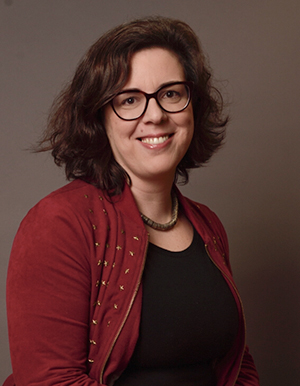Catarina Brito Lab
Animal Cell Technology Unit

 |
Our research is mostly translational and focused on the study of cellular microenvironment in disease progression and therapeutic response. To address these questions we develop and employ advanced cell-based disease models, using stem cells and other patient-derived cell and exploring three-dimensional culture strategies, along with cell biology and biochemistry approaches. Our projects address several neurological pathologies and cancer. |
|
Catarina Brito Phone (+351) 214469434 | Extension 1434 |
|
Research Interests
As befits a technological area, the Advanced Cell Models Laboratory is integrated in the Animal Cell Technology Unit, where a number of knowledge competences are balanced.
At the Advanced Cell Models Lab, our research is mostly translational and focused on the study of cellular microenvironment in disease progression and therapeutic response. A major challenge in studying the underlying mechanisms is the lack of human cell models in which the different contributing cell types are represented and the dynamics of the cellular and extracellular spaces recapitulated without the confounding effects of heterologous ECM and soluble factors. To overcome these challenges we develop innovative disease cell models by applying advanced cell culture approaches (namely 3D culture, co-culture and cell immobilization) and systems (bioreactors) to human stem cells and other patient-derived cells. By integrating cell biology, biochemical, imaging, transcriptomics and proteomics approaches, we can depict the dynamic modulation of a specific cell microenvironment along time or in response to a therapeutic challenge. We aim at the identification of novel molecular players potentially involved in disease progression and therapeutic response, towards novel disease biomarkers or therapeutic targets.
There are two the main research lines in the lab. One aims at exploring the influence of extracellular space defects in neuronal function and its contribution to neuronal and synaptic functional impairment and neurodegeneration. Our neurospheroid models are based on 3D differentiation of human induced pluripotent stem cells (hiPSC) in perfusion stirred tank bioreactors and long-term culture. Neurospheroids are composed by functional neurons, astrocytes and oligodendrocytes, embedded in an extracellular matrix secreted and accumulated along differentiation. This homologous ECM presents specific features of human neural tissue ECM. We are currently applying the neurospheroid model to address molecular defects in cell-ECM interactions associated with Traumatic Brain Injury and to Mucopolysaccharidosis type VII (MPS VII), a neuropathic lysosomal storage disease caused by deficient β-glucuronidase (β-gluc) activity, which leads to accumulation of glycosaminoglycans (GAGs) in many tissues, including the brain.
The second research line is focused on the influence of tumor microenvironment in the response to targeted therapies, including resistance. In our 3D-3-cultures (co-cultures of tumour cell spheroids, fibroblasts and monocytes), the hallmarks of immunosuppressive carcinoma microenvironments are recapitulated. There is accumulation of cytokines, ECM and metalloproteinases, with infiltration of macrophages in the tumour mass and trans-polarization into M2-like phenotypes. Challenging of the system with previously validated compounds could induce repolarization into an M1-like phenotype. Currently we are exploring the 3D-3-culture models to dissect tumour-macrophage crosstalk in specific cancer contexts. Under the umbrella of the iNOVA4Health research unit, we are developing ex vivo models, based on patient material. In our long-term cultures, explants retain the architecture, cellular composition and functional aspects of colorectal, ovarian and breast tumour samples and are being explored for its potential for prediction of therapeutic response.
Group Members
- Catarina Brito, PhD, Head of Lab
- Giacomo Domenici, PhD, Post-doctoral Fellow
- Ana Luísa Cartaxo, PhD Student (co-supervised by Dr Inês Pires da Silva; Melanoma Institute Australia and Sydney University)
- Teresa Mendes, PhD Student (co-supervised by Dr Isadora Rosa, IPOLFG, Lisbon)
- Ana Sofia Batalha, PhD Student (co-supervised by Dr Inês Pires da Silva; Melanoma Institute Australia and Sydney University)
- Nuno Lopes, Junior Research Fellow
-
Rodrigo Eduardo, Junior Research Fellow
-
Beatriz Painho, Junior Research Fellow
-
Catarina Gomes, Junior Research Fellow
-
Gonçalo Trindade, MSc Student
-
Jhenifer Lopes, MSc Student
Selected Publications
-
Simão D, Silva MM, Terrasso AP, Arez F, Sousa MFQ, Mehrjardi NZ, Šarić T, Gomes-Alves P, Raimundo N, Alves PM, Brito C (2018) “Human neural microenvironment specific features are promoted by 3D differentiation of iPSC-derived NPC”, Stem Cell Reports 11, 552-564. https://doi.org/10.1016/j.stemcr.2018.06.020
-
Terrasso AP, Bayó-Puxan N, Creyssels S, Lory P, Cuervo AM, Simão D, Pescia C, Bernex F, Salinas S, Lavigne M, Vellard M, Levade T, Consiglio A, Brito C,* & Kremer EJ (2018) “Lysosomal and network alterations in human mucopolysaccharidosis type VII iPSC-derived neural cells”, Scientific Reports 8: 16644 https://doi.org/10.1038/s41598-018-34523-
-
Rebelo S, Pinto C, Martins TR, Harrer N, Estrada MF, Loza-Alvarez P, Cabeçadas J, Alves PM, Gualda E, Sommergruber W, Brito C (2018) “3D-3-culture: a tool to unveil macrophage plasticity in the tumour microenvironment”, Biomaterials, 163, 185-197. https://doi.org/10.1016/j.biomaterials.2018.02.030
Laboratory's Website
For further information please visit the ACT webpage
Laboratório de Modelos Celulares Avançados (PT)
A nossa investigação é essencialmente translacional, centrada no estudo do microambiente celular na progressão de doenças do Sistema Nervoso Central e de Cancro, bem como na resposta à terapêutica. Para responder a estas questões, recorremos a modelos celulares avançados de doença, baseados em células estaminais e/ou outras células derivadas de pacientes, explorando estratégias de cultura celular tridimensional. Combinamos metodologias de biologia celular, bioquímica, microscopia e proteómica para caracterizar os modelos desenvolvidos. Temos como objectivo final a identificação de moléculas envolvidas na progressão das doenças e na resposta aos agentes terapêuticos, que possam funcionar como marcadores moleculares de doença ou potenciais alvos terapêuticos











